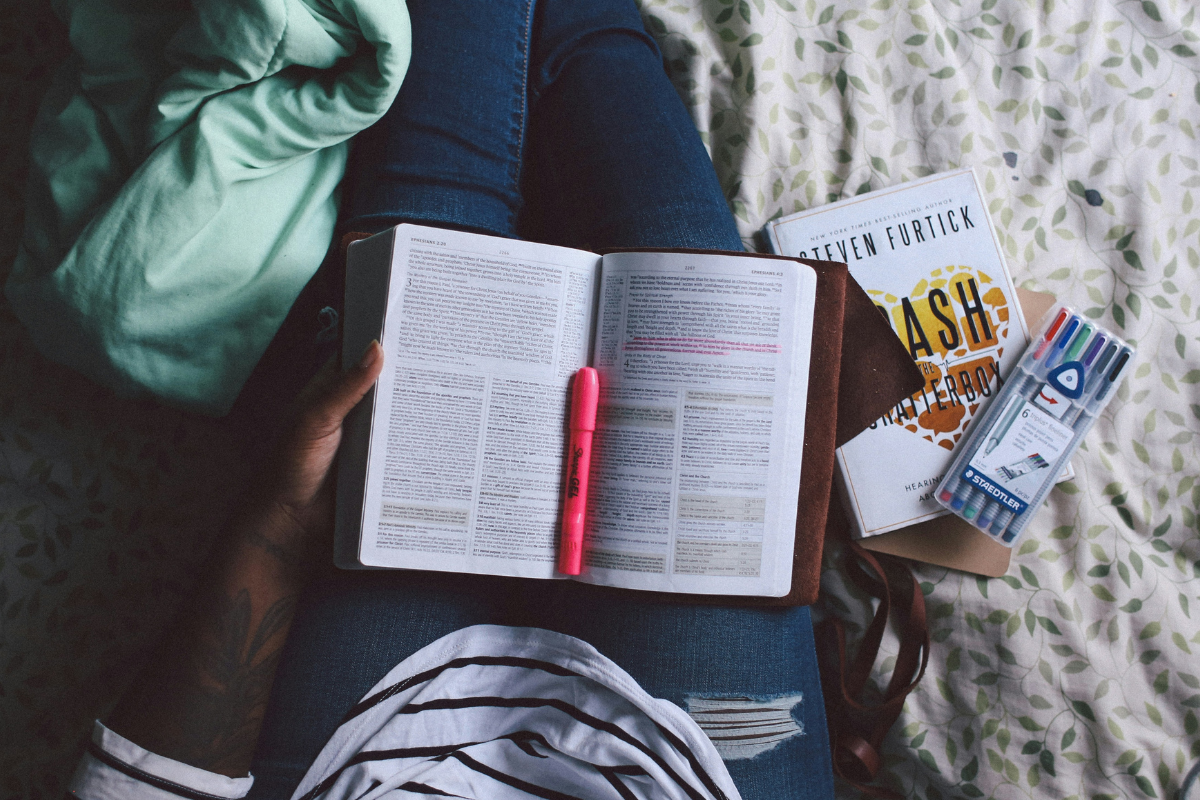For this post, you’ll learn about the benefits of using mood boards to communicate ideas to clients with different types of requirements. I’ll be using real examples created by Verve Search’s designers.
But firstly…
What is a mood board?
A mood board is a type of visual presentation that consists of several design elements in one composition. It’s a way to visually communicate your imagination with the world, as well as convey a general idea or a feeling about a particular topic.
Mood boards can be physical or digital. For example, a UI designer might find a digital version a better option for organising inspiration for a new mobile application.
Conversely, someone like a perfumer may want to use a physical mood board to include textures and objects to convey the emotion and mood of a unique perfume scent.
The benefits of using a mood board for client work
Mood boards are a valuable step in the design process as they help establish a strong foundation to the look and feel of a project and can be used to creatively align with project stakeholders early on.
They are a fundamental transition between an initial thought and a first draft, and help save on resources and energy when maturing ideas.
Mood boards should be a jumping-off point for discussing, refining, and trying out ideas without commitment, while also making sure that the team and the client are on the same page as the designer.
At Verve Search, we use digital mood boards in the production process to communicate the mental model of a designer who is working on a campaign. Mood boards help transform ideas into a collage of useful visual references, and there are lots of options you can explore on what to include in your own digital mood board.
What to include in a digital mood board for a client
A mood board is a collection of elements, such as colour, typeface, UI framework, or theme, that visually unifies a set of images. You might also want to include customised design elements that will be used in the final design.
That being said, content visualised on a mood board doesn’t necessarily have to appear in the outcome of the project; the visuals could just serve as a way to describe a feeling or aesthetic.
Below is an example of a mood board I presented to our client Paxful for the Video Game Investments campaign. As you can see, I’ve included different icon ideas, a colour palette, an example of typography, UI inspiration, imagery, and a logo.
On your mood board, you might also want to include different textures, shapes, and interactions between elements to give the client an idea of how you visualise your project’s look and feel.
 Tip
Tip
Mood boards don’t need to appear too polished. They are not intended to show a final deliverable, but to give those involved with the project an idea of the visual direction.
Mood boarding approach
The way you should approach mood boarding at the beginning of a project depends on the type of project it is; is it a personal project or work for a client?
Working on a client project often means there is less freedom to experiment with design concepts, as there might be some existing client requirements or style guides in place. This is true especially for clients that already have an established design vision.
In this case, the mood boards should give a sense of the client’s taste and requirements while also exploring some potential design directions.
Below, I’ve detailed the ways the design team at Verve Search has approached three different client requirements and included some examples of our resulting mood boards and final designs…
1: Clients with a style guide and extensive requirements
In the first example, I will talk about clients that provide a style guide and have strict requirements when it comes to the look and feel of the final product.
Below is an example of a mood board that was put together for Lookfantastic’s Instagram Emotions campaign. The mood board includes some imagery from existing assets belonging to the client that serve as design reference, and some elements from their style guide, such as colour and typography. The mood board also includes some inspiration for the way our findings could be visualised in a map and pie chart.
Looking at the final design below, you can see how I maintained a similar layout and colour scheme to the ones showcased in the mood board.
Working with clients that have strict design requirements and style guides in place might seem like a bit of a creative challenge, but having access to a client’s style guide is a helpful way of understanding the client themselves – especially if you are new to working with them. Overall, their style guides will contribute to better communication and a mutual understanding of what will be expected from the designs.
2. Clients with a style guide and minor requirements
For The Jargon of Jobs, our client Canva provided us with both a style guide and some minor design requirements to keep in mind. We were tasked with creating a playful feel, using Open Sans as our font choice, and selecting an accent colour from the two they had provided us.
The resulting mood board for this campaign included some style guide references, inspiration for data visualisation in the form of a map, and some examples of trending design choices that we believed would work well as a design direction for this project.
The final design included all client requirements in terms of font, colour, and mood. On our side, we added a custom-made illustration depicting confusion (which worked well with the campaign’s theme) and a trendy radiant gradient to complement the logo.
For this type of client, I’d recommend not getting too attached to a particular style or a design vision. It’s a good idea to have a few options in mind, for example a more experimental design and also a safer design option. In the case of the first design option being rejected, you can always fall back on another design option that you have at hand.
3. Clients with no style guide or specific requirements
For our client Admiral’s campaign Home Alone 2021, the client gave us complete freedom in terms of design choices. We did however have to create a layout similar to the previous Home Alone campaign, for which this campaign served as a 2021 update.
Since the topic for this campaign was vacant homes, we thought it would be great to reflect this with visuals like architectural blueprints. Therefore, a clean feel and accents of blue can be recognised in this project’s mood board. Other mood board elements included inspiration for the navigation aspects and snippets of the previous campaign.
Home Alone 2021’s final design featured a clean layout and an aesthetically pleasing colour scheme, with a large illustration of a lonely, isolated house on the splash page that made the interface more engaging.
From personal experience, I have worked on various campaigns and they all differed in their look and feel. Each project had its own concept that needed to be projected through design.
There have been campaigns that required more effort regardless of it having or not having a client’s style guide in place. No project is the same, but this is why mood boards exist – to help creatives in starting a project in the right direction.
How do the designers at Verve Search approach the mood boarding process?
The steps outlined below refer to the design stage of the campaign creation process. This is the standard mood boarding process as followed by the design team at Verve Search and may be a helpful guide if you’re starting out on a design project.
Step 1: Campaign kick-off
Campaign kick-off is the first meeting we have as a team when starting a new campaign. During this meeting we get briefed on the campaign’s concept and have the opportunity to ask campaign-related questions. For designers, this would usually be the time to ask about the client’s requirements and the creative team’s expectations.
Spending some time researching will help you visualise the ideas better during campaign-related meetings. This could apply to prior campaign kick-off or data handover.
Tips at this stage:
- Understand the concept of the campaign
- Understand the client and what they want to achieve
- Note down relevant keywords
Step 2: Brainstorming
At this stage, the key is to write down as much relevant information as possible. Try to combine all the knowledge you’ve gathered on the project so far and start to think about what could inspire you, products to be inspired by, colours, and anything that could impact the design.
One way to do this is to take a piece of paper and start writing down keywords. You can then categorise them into groups like style, font, or colour. This process will help to organise your thoughts and transform mere imagination into a workable concept.
Tips at this stage:
- Create a word cloud using relevant keywords and associations
- Note initial thoughts on the look and feel of the campaign
- Research possible ways to visualise the data
Step 3: Initial mood boarding
The initial mood boarding process should set the mood of the campaign and define a desired emotional response. These are the emotions a viewer should feel when looking at the mood board.
Try jotting down adjectives that define the style that needs to be achieved and organising all the images you’ve collected according to their common visual theme. It’s important to eliminate any images that look alike or unnecessary – less is more.
Tips at this stage:
- Analyse the client’s style guide
- Analyse the client’s website or similar platforms
- Search for visual references and concepts on Dribbble or sources alike
- Explore fonts (if not provided by the client)
Step 4: Data hand-over and mood board refinement
Once the data has been handed over to the designers and the content of the campaign is clear, it’s time to make final refinements to the mood boards by adding and removing visuals where appropriate.
Tips at this stage:
- Refine the mood board according to the campaign’s content
- Refine the mood board according to the campaign’s data
The takeaway from all of these steps is to organise your work, even if you are just brainstorming. Doing prior research and making a note of initial ideas could really help you later in the project. You will be able to go back to the initial ideation process and understand why you made a certain design decision. This is also helpful when presenting your work to clients or your team.
Final thoughts
Mood boards are an uncomplicated way of communicating a design concept that minimises any misunderstandings that might arise from trying to describe a concept verbally.
A good starting point for any designer is research, including reading through the client’s style guide, looking for the market’s standard in colour psychology, typography, and overall design.
Since mood boards are usually shared with non-designers, it’s important to arrange them in a way that will make sense to viewers who are new to design as well.
Further reading
Take a look at the below resources for further mood boarding inspiration:
Interested in our content marketing and digital PR services? Get in touch.







